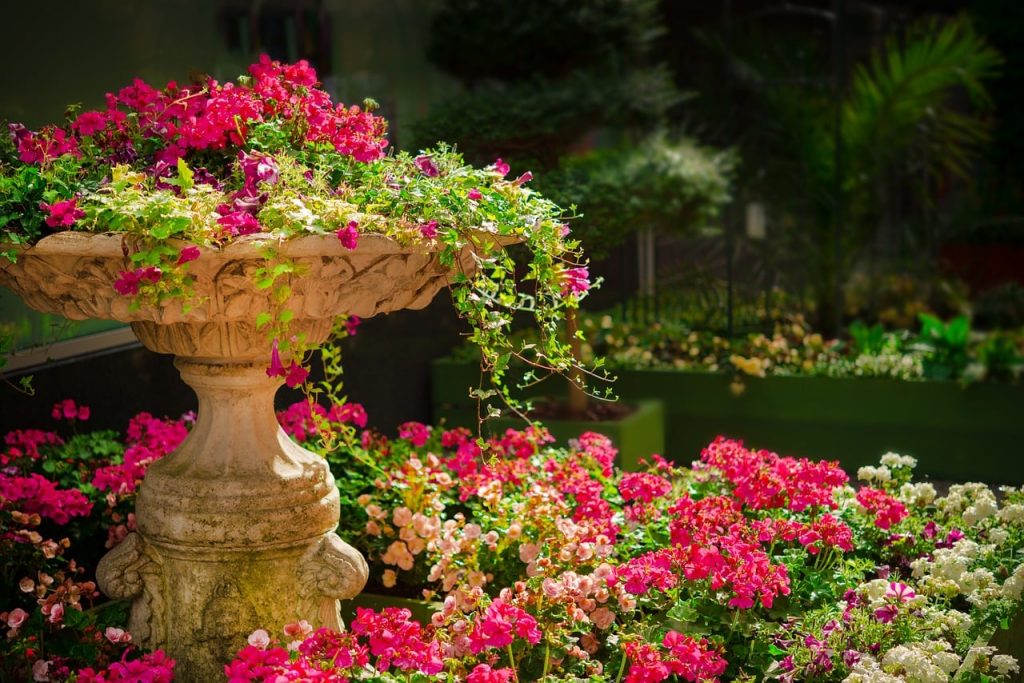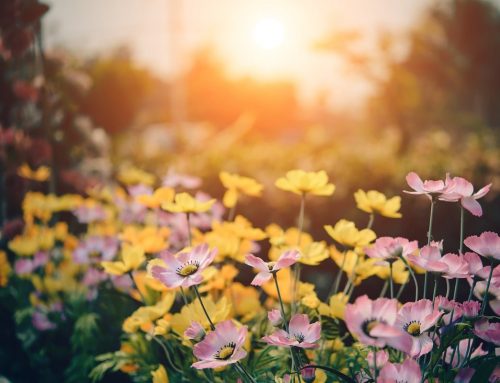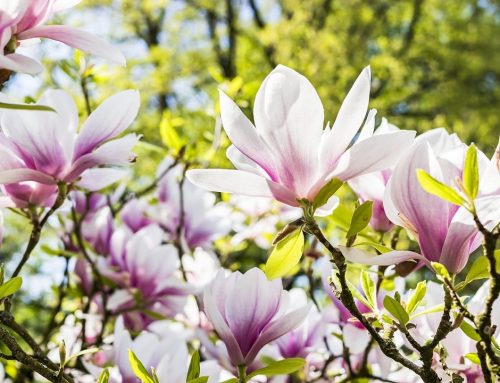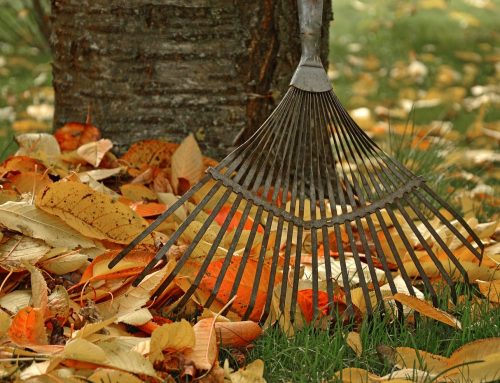A garden is not static. Instead it is a dynamic, always-growing, ever-evolving, and thoroughly essential part of a property’s aesthetic. Garden design and garden maintenance plans address this through by anticipating obstacles and taking full advantage of opportunities.
Throughout the year, experienced gardeners know that good planning and consistent work can keep the garden growing and developing in a useful and beautiful fashion. Of course the plan should also include lawn care of the land surrounding the garden to make sure that poor lawn mowing and other techniques do not detract from the overall appearance of the garden itself.
Springtime Is Garden Prep Time
When winter ends and spring rolls in, gardeners in Sydney’s Eastern Suburbs, the Inner West, and across the city, start thinking about prep work for summer.
Some of the tasks that savvy gardeners embark on as the days lengthen help to prepare the plants for upcoming summer heat and days of long exposure to the sun. Renewing mulch not only provides a fresh look, but can help protect roots and soil moisture. As lawn mowing season starts, many use this time to make any adjustments needed to their lawn care scheme.
Spring also provides the best opportunity to do tasks, such as pruning, that consume time and effort and are better done in cooler spring than in the heat of summer. This helps to promote the well-being of both garden and gardener.
 " data-srcset="/wp-content/uploads/2019/07/garden-maintenance-plan-20x13.jpg 20w, /wp-content/uploads/2019/07/garden-maintenance-plan-200x133.jpg 200w, /wp-content/uploads/2019/07/garden-maintenance-plan-300x200.jpg 300w, /wp-content/uploads/2019/07/garden-maintenance-plan-400x267.jpg 400w, /wp-content/uploads/2019/07/garden-maintenance-plan-600x400.jpg 600w, /wp-content/uploads/2019/07/garden-maintenance-plan-768x512.jpg 768w, /wp-content/uploads/2019/07/garden-maintenance-plan-800x534.jpg 800w, /wp-content/uploads/2019/07/garden-maintenance-plan-1024x683.jpg 1024w, /wp-content/uploads/2019/07/garden-maintenance-plan-1200x801.jpg 1200w, /wp-content/uploads/2019/07/garden-maintenance-plan.jpg 1280w" data-sizes="auto" data-orig-sizes="(max-width: 1024px) 100vw, 1024px" />
" data-srcset="/wp-content/uploads/2019/07/garden-maintenance-plan-20x13.jpg 20w, /wp-content/uploads/2019/07/garden-maintenance-plan-200x133.jpg 200w, /wp-content/uploads/2019/07/garden-maintenance-plan-300x200.jpg 300w, /wp-content/uploads/2019/07/garden-maintenance-plan-400x267.jpg 400w, /wp-content/uploads/2019/07/garden-maintenance-plan-600x400.jpg 600w, /wp-content/uploads/2019/07/garden-maintenance-plan-768x512.jpg 768w, /wp-content/uploads/2019/07/garden-maintenance-plan-800x534.jpg 800w, /wp-content/uploads/2019/07/garden-maintenance-plan-1024x683.jpg 1024w, /wp-content/uploads/2019/07/garden-maintenance-plan-1200x801.jpg 1200w, /wp-content/uploads/2019/07/garden-maintenance-plan.jpg 1280w" data-sizes="auto" data-orig-sizes="(max-width: 1024px) 100vw, 1024px" />
Understanding How Fertilisers Help
Fertilisers can make or break a garden. Just like food that humans eat, different plants need different nutrients. Also, too much of the wrong fertiliser can lead to disaster.
Fertilisers contain active ingredients, such as nitrogen, phosphorous, and potassium, that, in the right amounts and combinations can promote excellent growth. Too much of certain nutrients in the wrong combinations has the potential to harm plants. Even worse, excessive nutrients could run off into streams and promote damaging bio pollution, while also wasting your money.
A solid garden maintenance plan takes into account the precise amounts of nutrients needed for each plant. This prevents both waste and adverse environmental impact.
Finally, many gardeners test their soil for ph levels to determine which plants will thrive naturally in the soil and which need extra assistance.
Rotate Crops in Vegetable Gardens
Beginning gardeners may not realise that certain crops can drain the soil of essential nutrients while others can restore them. Crop rotation, an agriculture basic since the Middle Ages, establishes a three area system. One area receives a plant whose growth promotes nutrient development, while two others grow crops that require what the soil can give.
Although fertiliser and other techniques can maintain nutrient levels, rotation provides the most organic and environmentally friendly approach, using nature’s own processes to keep soil productive.
 " data-srcset="/wp-content/uploads/2019/07/Sydney-garden-maintenance-20x13.jpg 20w, /wp-content/uploads/2019/07/Sydney-garden-maintenance-200x133.jpg 200w, /wp-content/uploads/2019/07/Sydney-garden-maintenance-300x199.jpg 300w, /wp-content/uploads/2019/07/Sydney-garden-maintenance-400x266.jpg 400w, /wp-content/uploads/2019/07/Sydney-garden-maintenance-600x398.jpg 600w, /wp-content/uploads/2019/07/Sydney-garden-maintenance-768x510.jpg 768w, /wp-content/uploads/2019/07/Sydney-garden-maintenance-800x531.jpg 800w, /wp-content/uploads/2019/07/Sydney-garden-maintenance-1024x680.jpg 1024w, /wp-content/uploads/2019/07/Sydney-garden-maintenance-1200x797.jpg 1200w, /wp-content/uploads/2019/07/Sydney-garden-maintenance.jpg 1280w" data-sizes="auto" data-orig-sizes="(max-width: 1024px) 100vw, 1024px" />
" data-srcset="/wp-content/uploads/2019/07/Sydney-garden-maintenance-20x13.jpg 20w, /wp-content/uploads/2019/07/Sydney-garden-maintenance-200x133.jpg 200w, /wp-content/uploads/2019/07/Sydney-garden-maintenance-300x199.jpg 300w, /wp-content/uploads/2019/07/Sydney-garden-maintenance-400x266.jpg 400w, /wp-content/uploads/2019/07/Sydney-garden-maintenance-600x398.jpg 600w, /wp-content/uploads/2019/07/Sydney-garden-maintenance-768x510.jpg 768w, /wp-content/uploads/2019/07/Sydney-garden-maintenance-800x531.jpg 800w, /wp-content/uploads/2019/07/Sydney-garden-maintenance-1024x680.jpg 1024w, /wp-content/uploads/2019/07/Sydney-garden-maintenance-1200x797.jpg 1200w, /wp-content/uploads/2019/07/Sydney-garden-maintenance.jpg 1280w" data-sizes="auto" data-orig-sizes="(max-width: 1024px) 100vw, 1024px" />
Remain Vigilant for Pests and “Pals”
Before talking about the nasty critters that can harm a garden, consider first a gardener’s natural allies in the animal kingdom. Blanket spraying of pesticides can get rid of the baddies, but also carpet bomb clusters of good guys as well. Bees, ladybugs, and other insects pollinate and in other ways contribute to plant health, not only in the garden, but also the entire ecosystem.
Some farmers even plant banks of wildflowers near gardens or greenhouses to attract bees, the ultimate gardener pal.
Other insects and critters definitely bring harm to a garden. Properly used insecticides can keep away crop killers such as aphids and mites. Gardeners can remove snails and slugs by hand or use poisonous pellets to make the job easier.
Remember that some pesticides should not be used on food producing plants. Low toxicity, systemic pesticides target the damaging insects while reducing harm to those that help.
Keeping the Garden Healthy Even in Drought Conditions
Nothing kills a garden, along with a gardener’s spirit, quite like a drought. Over the years, drought conditions are unfortunately inevitable. Droughts reduce the natural water available to plants due to the lack of rain, meaning that a gardener must work harder to make sure that the plants do not dry out. It also forces a garden to endure the relentless effects of constant sun with no break, baking the soil into a hard crust while also reducing groundwater reserves. Urban areas, and those countryside areas that rely on wells, may need to ration water in extreme instances.
Certain areas are more prone to drought than others, so gardeners in these areas need to take more care in droughtproofing their garden. Some ways to do so include:
- Researching simple water saving tips that are used in reduced rain environments around the world
- Keeping the soil healthy and using mulch around the plant and roots to retain moisture
- Choosing plants that are resilient enough to survive a potentially hostile environment. Not every plant can or should be grown in any soil type or in any climate.
Beginners Should Keep it Simple
In many cases, those just starting out in the world of gardening have cultivated ambitions and ideas for years. In their excitement to launch their garden project, they pursue complex plans that quickly put the novice gardener in the weeds, so to speak.
Beginners should do their research on plants and soils before they begin, talking to local and regional experts, looking things up online and in books, and starting with simple plants that are easy to grow. They ought to choose the hardiest and most resilient plants appropriate for the region in the first year, then slowly branch out as they gain experience. Over time, risks will be more calculated and based in knowledge and experience. Nothing overwhelms and discourages so much as ill directed effort leading to massive failure.
Keeping it simple at first increases the chance for success and the reward of a beautiful and appealing garden, and property.
These tips, however, are not exhaustive. Successful gardeners always strive to learn more, whether through research or observation. This will ensure that the garden can continue growing and evolving in an attractive, and a productive, direction.

 " data-orig-src="/wp-content/uploads/2019/07/lawn-care-and-lawn-maintenance.jpg" data-srcset="/wp-content/uploads/2019/07/lawn-care-and-lawn-maintenance-200x132.jpg 200w, /wp-content/uploads/2019/07/lawn-care-and-lawn-maintenance-400x265.jpg 400w, /wp-content/uploads/2019/07/lawn-care-and-lawn-maintenance-600x397.jpg 600w, /wp-content/uploads/2019/07/lawn-care-and-lawn-maintenance-800x529.jpg 800w, /wp-content/uploads/2019/07/lawn-care-and-lawn-maintenance-1200x794.jpg 1200w, /wp-content/uploads/2019/07/lawn-care-and-lawn-maintenance.jpg 1280w" data-sizes="auto" />
" data-orig-src="/wp-content/uploads/2019/07/lawn-care-and-lawn-maintenance.jpg" data-srcset="/wp-content/uploads/2019/07/lawn-care-and-lawn-maintenance-200x132.jpg 200w, /wp-content/uploads/2019/07/lawn-care-and-lawn-maintenance-400x265.jpg 400w, /wp-content/uploads/2019/07/lawn-care-and-lawn-maintenance-600x397.jpg 600w, /wp-content/uploads/2019/07/lawn-care-and-lawn-maintenance-800x529.jpg 800w, /wp-content/uploads/2019/07/lawn-care-and-lawn-maintenance-1200x794.jpg 1200w, /wp-content/uploads/2019/07/lawn-care-and-lawn-maintenance.jpg 1280w" data-sizes="auto" /> 


